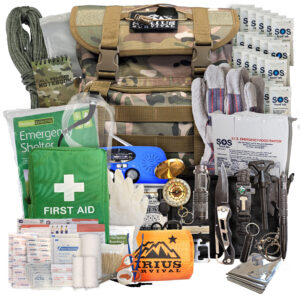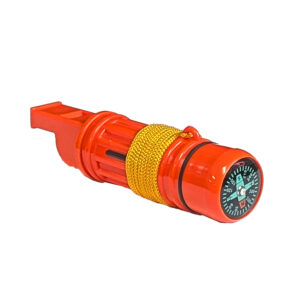One of the best ways to keep yourself safe is to exhibit situational awareness. A lot of people talk about having it, and how important it is, but not too many people really talk about what it is or how to exhibit it. Some people recommend keeping “your head on a swivel” and essentially this is the same thing.
It’s definitely great advice, but it doesn’t help you much if you just don’t know if you have that trait or how to do it if you don’t naturally exhibit those behaviors.

What Is It?
Situational awareness is essentially the act of gathering information around you, in your current environment, and the people in your current environment, to assess if there are any potential or imminent threats.
If you do not already have situational awareness you may not see a threat coming. You may be in the face of danger but simply just not realize it. Sometimes the threats can be pretty obvious, but if you aren’t situationally aware you may miss even the most obvious.
On the other end of the spectrum, having good situational awareness allows you to see a threat, or a perceived threat, and react accordingly – hopefully taking you out of dangers and harm’s way.
How Do I Do It?
If situational awareness just isn’t natural to you or you don’t automatically do it, there are some ways to improve or to work on that skill Practice. Learn what to do, how to do it, and then practice. you won’t immediately grasp the concept and suddenly see all the dangers in the world, but practicing this will help prevent yourself from being in dangerous situations in general.

Some things that can be done may seem pretty practical to some people, but for others, it isn’t always common sense to remain so alert. If you are walking by yourself, try to be sure you don’t have headphones in or music playing. Try not to be on your phone or walk through locations where little to no people are visible.
Instead, remain alert, but calm. Being situationally aware does not mean you are jumping at every noise and running from any person you encounter. Instead, you are calm, cool, and collected, but alert. You are looking around, literally, to gather information about your surroundings.
Example:
You show up to an event at a location you have never been to before. You arrive alone. Quickly scan the area and locate the nearest exits. How would you get out quickly if you needed to? Check out the people in the area. Do any of them seem to be acting suspicious or odd? Is there someone there you know that you can gravitate towards instead of being by yourself the entire time? Here are some telltale signs to look for in others that might help you recognize a threat.
Pre-Attack Indicators

There are some pretty common things to look for when noticing your surroundings. If you see any of these behaviors or actions you might want to be on alert even more and do your best to leave the situation as quickly as possible.
Someone acting unusually is a definite sign that something is up. If someone seems out of place you may want to pay attention to that persona bit more. An example of this might be if you are in the grocery store and someone is walking around, maintaining a close distance to you, with no items and no cart. This may seem unusual given the circumstances.
Another indicator that an attack might occur is if someone else’s actions seem to be responsive to yours. The most common example of this is if someone is following you. If you turn the corner, do they also turn the corner? If you stop walking, do they stop walking as well? This is a major tip-off.
Speaking of movement, if someone tries to cut you off or intercept you, be aware. If someone is trying to get into your space or getting too close, your alarm bells should be sounding. With this in mind, can you see their hands? If someone is coming near you and you cannot see their hands (they’re inside coat pockets, etc.) this may be a sign that there is a danger.
Again, these are just some common signs of someone who may be up to no good. I’m not saying that every human being that has their hands in their pockets is a threat to you, but it’s something to be mindful of.
Environmental Factors
Being aware of other people is a great place to start, but you should also be aware of your location as well. Simple things such as a wet floor or cords or uneven tiles that may end up being tripped over could cause harm. In addition, as mentioned earlier in the article, know your exits. Know where the nearest medical facility is. Know where the closest first aid kit is.
Some other things you should take into consideration in terms of your environment is what kind of ground you are on. Are you on a slippery surface where it might be tough to fight if you needed to? Are you on a steep slope and trying to get your footing?

Situational awareness is a skill that may need to be practiced. It’s a lot more in-depth than just paying attention. It’s taking in all of the necessary information from your surroundings and adjusting your behaviors as necessary. Stay safe out there.





